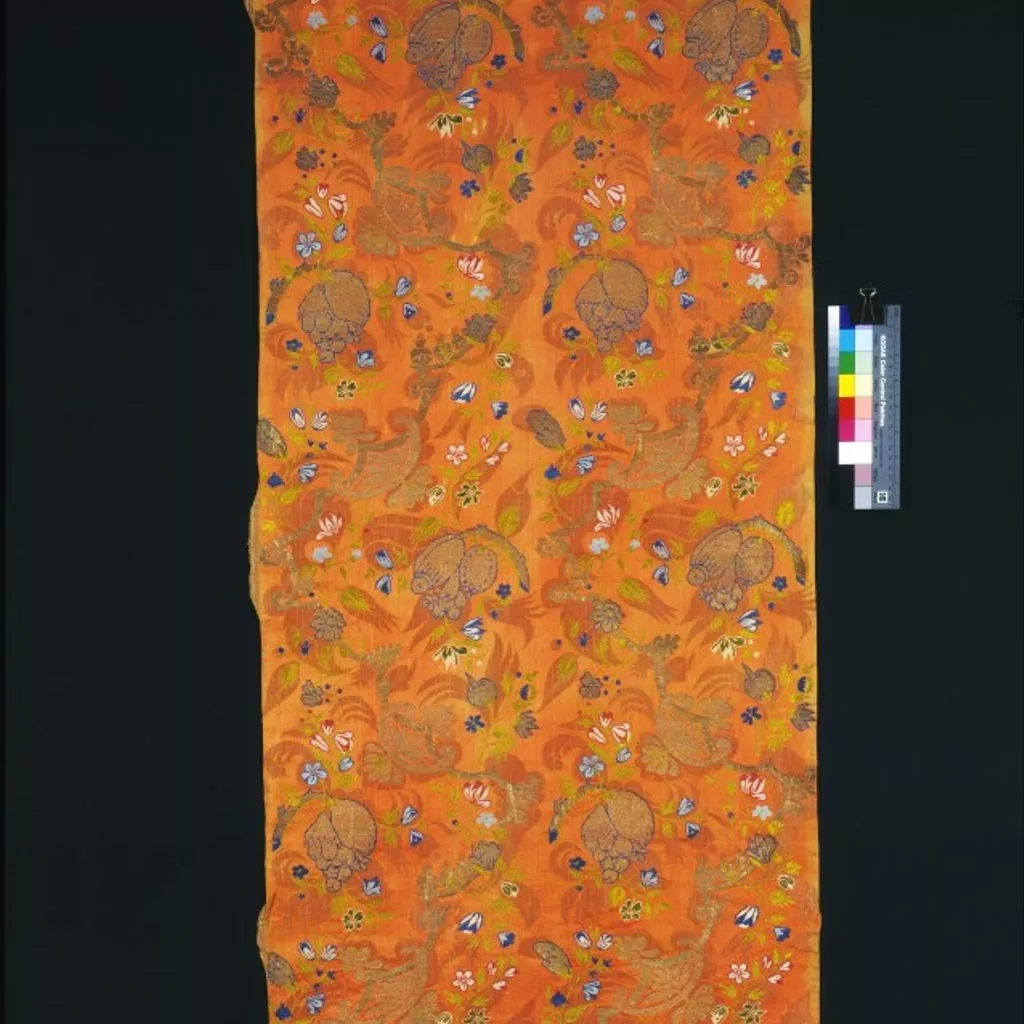1700~, France
1700~, France
- Identifier
- T.166-1927
- Acquisition
- Given by J. B. Clarke-Thornhill
- Collection
- Technique
- Depiction
- Floral motif 51%

- Floral motif 82%

- Floral motif 51%
- Dimension
- 128.5 cm (length)57.20000076293945 cm (width)
- Production time
- Production place
- Type of object
Description
This length of woven silk was intended for clothing. It might have been chosen for a woman's gown or a man's waistcoat or nightgown, worn informally at home. The complexity of its woven structure would have made it expensive. Its bold pattern and distinctive colouring date it to a fairly brief period around 1700 when such a combination was highly fashionable.
Places
Dress silks from France began to dominate fashionable taste across Europe from the 1660s. The Minister of Finance, Jean-Baptiste Colbert (1619-1683), regulated the French textile industry to reduce the variety and improve the quality in each regional weaving centre. This was intended to help the centres compete against foreign imports, and to prevent their competing against each other. Lyon was the centre for the most complex and luxurious of the patterned silks. This example was probably woven there.
Design & Designing
In the late 17th and early 18th centuries the increasing import trade and other contacts between Asia and Europe greatly influenced the design of fashionable silks such as this. As well as the textiles themselves in clear, bright colours, other goods such as porcelain and lacquer lent shapes and motifs to the silk designers' repertoire. Books on natural history were a source for illustrations of unfamiliar flowers and fruit, fish, birds and other creatures. silk, 1705-20, probably French British Galleries: FOUR DRESS SILKS
By the early 18th century, the design and quality of English silks rivalled French imports. However, there was still a considerable market for luxurious silks woven in France among wealthy English customers. While the cut of clothes changed slowly, colours and designs of fabrics changed constantly. [27/03/2003]




